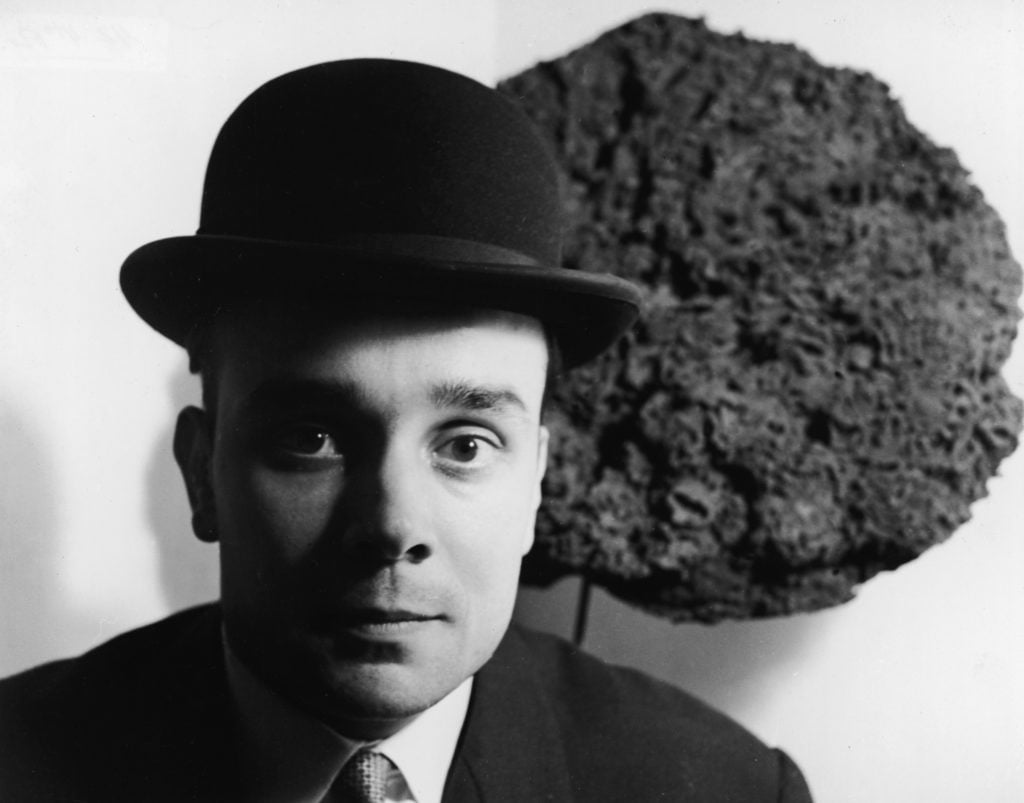Auctions
How Much for an Invisible Artwork? Sotheby’s Is Betting It Can Get a Half Million Dollars for a Sales Receipt by Yves Klein
Klein sold a number of such works between 1959 and 1962 in return for a weight of pure gold.

Klein sold a number of such works between 1959 and 1962 in return for a weight of pure gold.

Eileen Kinsella

Would you pay $500,000 for a certificate for an invisible artwork? What if it was by Yves Klein?
That’s the question bidders will have to ask themselves when Sotheby’s auctions off a receipt granting ownership to an invisible artwork by Klein in Paris on April 6. The estimate is €300,000 to €500,000 ($331,000 to $551,000 at current exchange rates).
Klein sold a number of so-called “zones of empty space” (Zone de sensibilité picturale immatérielle) in return for a weight of pure gold between 1959, the year he created the first one, and in 1962, when he died in Paris.
Only a handful of the receipts for the empty zones have survived, according to Sotheby’s, in part because Klein offered his collectors the choice to participate in a performance that involved burning the receipt and throwing half the gold into the Seine. This act was meant to “rebalance the natural order” that had been disrupted by the sale in the first place.
While some buyers eagerly agreed to this ritual, the former owner of this particular certificate, a dealer named Jacques Kugel, chose to keep his receipt, which he bought in 1959. Over the years, it was shown at major institutions including the Hayward Gallery in London, the Reina Sofia in Madrid, the Moderna Museet in Stockholm, and the Centre Pompidou in Paris.
The certificate is now in the collection of art advisor and curator Loic Malle, who acquired it 35 years ago. His collection is being offered at Sotheby’s next month.

Yves Klein. (Photo by Express Newspapers/Getty Images)
It was not the only project by the artist to explore empty space. In perhaps the most famous example, “Le Vide (The Void),” a 1958 show, paying visitors to a major Klein exhibition at Galerie Iris Clert were met with a completely empty gallery.
These days, the concept of an artwork as a receipt might not seem so foreign, with a new generation of collectors rushing to buy NFTs, which are certificates proving ownership of… the NFT. Ephemera can also be hugely lucrative. At Art Basel Miami Beach in 2019, Maurizio Cattelan’s banana taped to a wall, titled Comedian, was on sale—and sold—for a $120,000 price tag.
Other artists, such a Félix González-Torres, became famous for similar works. One of his most popular installations is made of hard candies piled into corners or onto flors. Like Klein’s work, these are similarly “interactive”: viewers are invited to take candy at will.
In November 2015, Christie’s New York sold González-Torres’s Untitled (L.A.) (1991), consisting of “green candies individually wrapped in cellophane, endless supply overall dimensions vary with installation,” for $7.7 million, higher than the presale estimate of $5 million to $7 million.